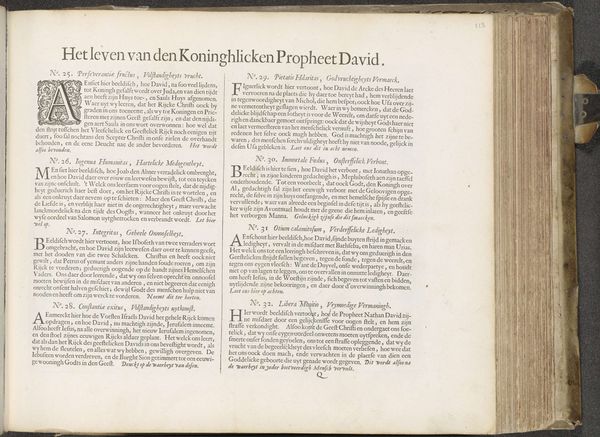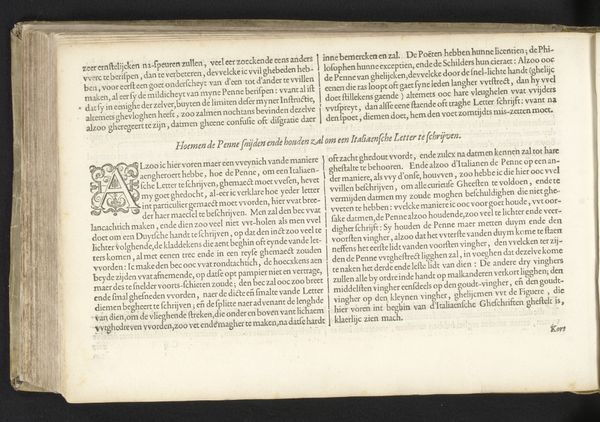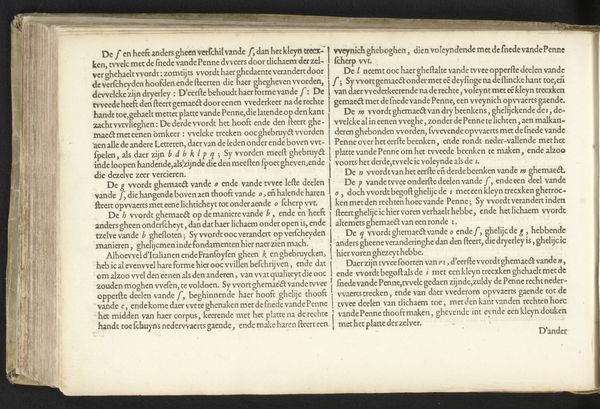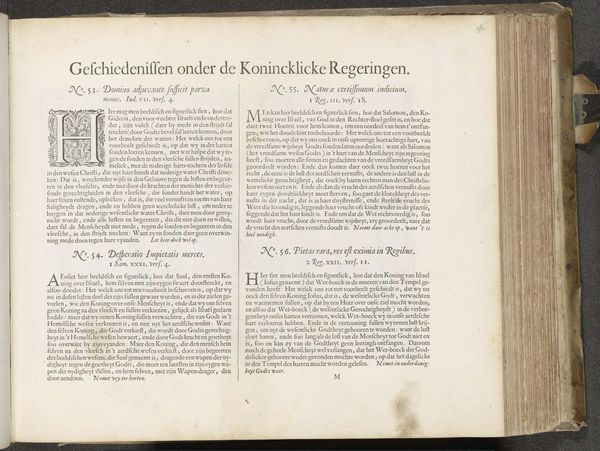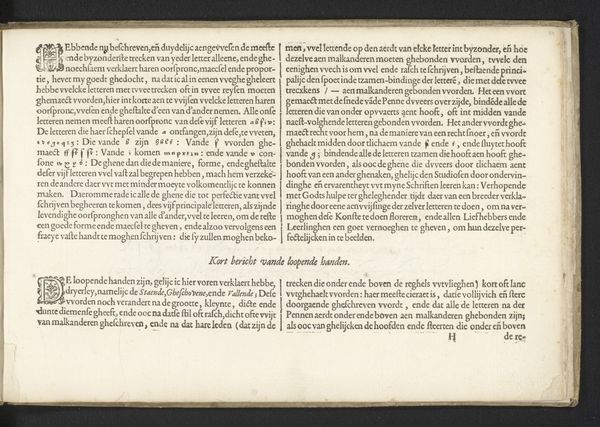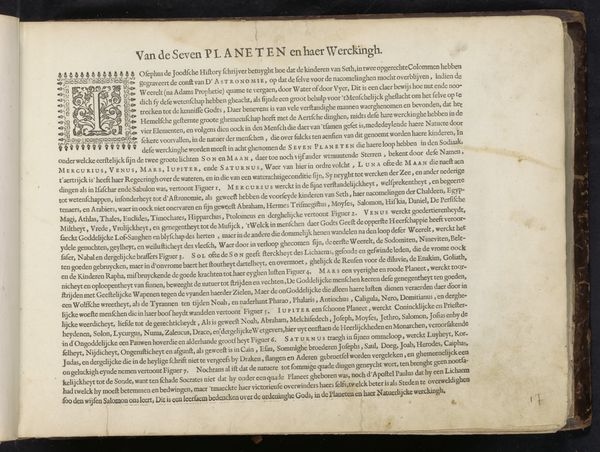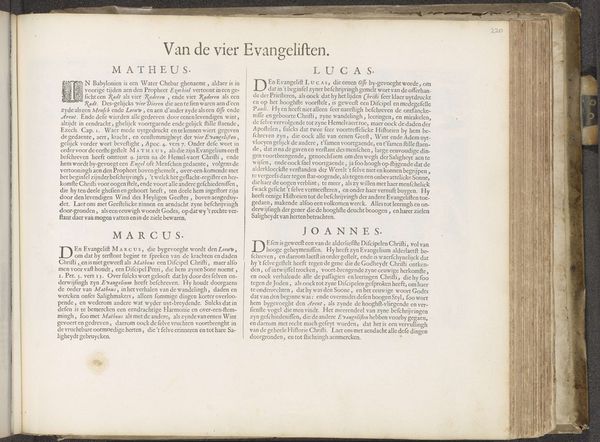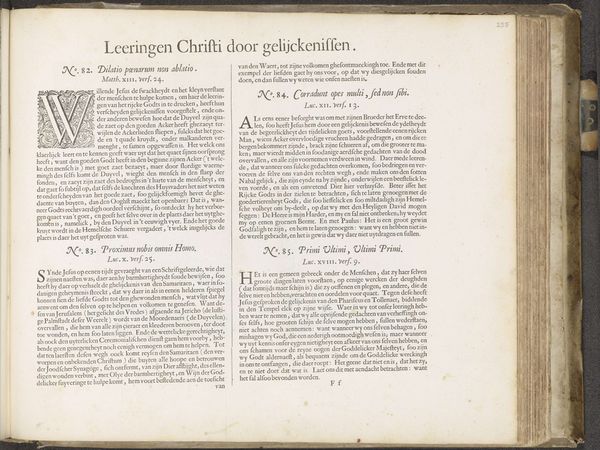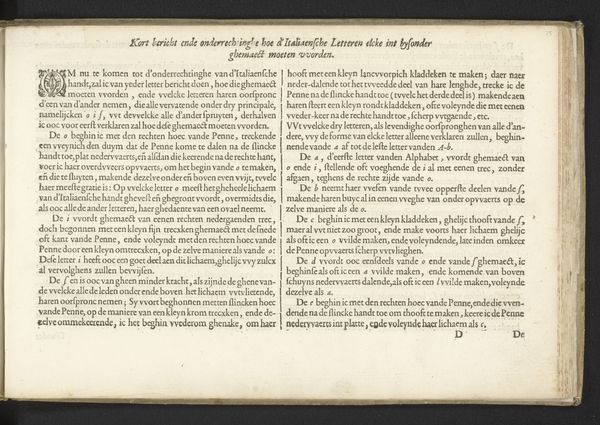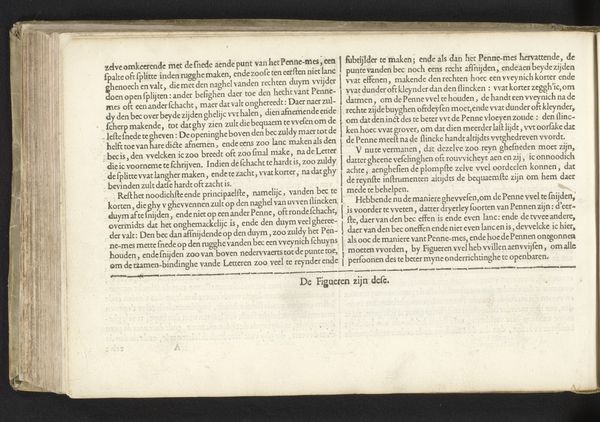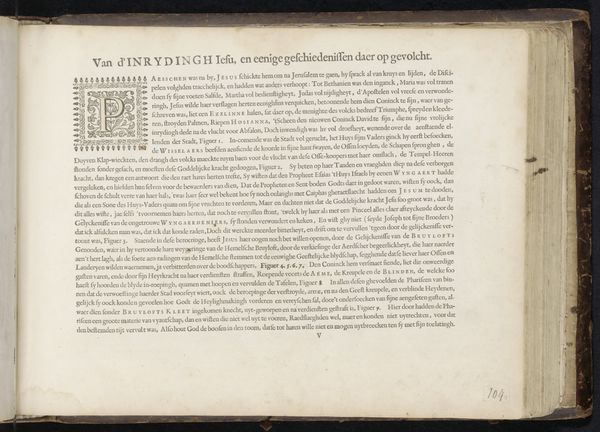
Acht toelichtingen bij voorstellingen over het leven van David 1653 - 1654
0:00
0:00
print, paper, typography
#
dutch-golden-age
# print
#
paper
#
text
#
typography
Dimensions: height 295 mm, width 370 mm
Copyright: Rijks Museum: Open Domain
Editor: So, this is “Acht toelichtingen bij voorstellingen over het leven van David” by Jan Philipsz Schabaelje, dating from 1653 to 1654. It’s a print on paper, filled with dense typography, and currently held at the Rijksmuseum. It feels almost like a historical document, more so than an artwork in the traditional sense. How do you interpret this work, especially considering its context? Curator: That's a very perceptive observation! Let's consider the socio-political environment in which Schabaelje was working. The Dutch Golden Age was a period of immense religious and political upheaval, particularly after the Synod of Dort. Typography at this time was a tool. It wasn't just to transcribe texts, it was used to distribute propaganda and assert certain socio-political viewpoints. Now, considering the use of language and its intended public audience, how might this piece be situated within debates related to religious authority? Editor: Hmm, that's interesting! I hadn't considered the typography as a deliberate choice beyond legibility. It's clear it’s conveying religious stories from David's life, so was it intended as a way to educate the masses, or something more… subversive? Curator: Education is undoubtedly a factor. However, education always takes place within a social and political agenda. I would lean towards it being an encouragement of religious instruction, through biblical texts. If people are able to consume media via their own devices and languages, what power does this allow? In your opinion, how does a focus on typographic elements and text refashion our perspective and allow us to read meaning on the paper, against simply in the artwork? Editor: It’s like, by prioritizing the text, it forces us to confront the stories directly and to engage critically with the prevailing religious discourse. I guess I saw the print as a relic, but understanding it in context of its socio-political sphere really brings it alive! Curator: Exactly! These objects have so much to tell, when placed within their intended cultural zeitgeist and how this can bring up conversations on identity, authority, and even resistance through history!
Comments
No comments
Be the first to comment and join the conversation on the ultimate creative platform.
